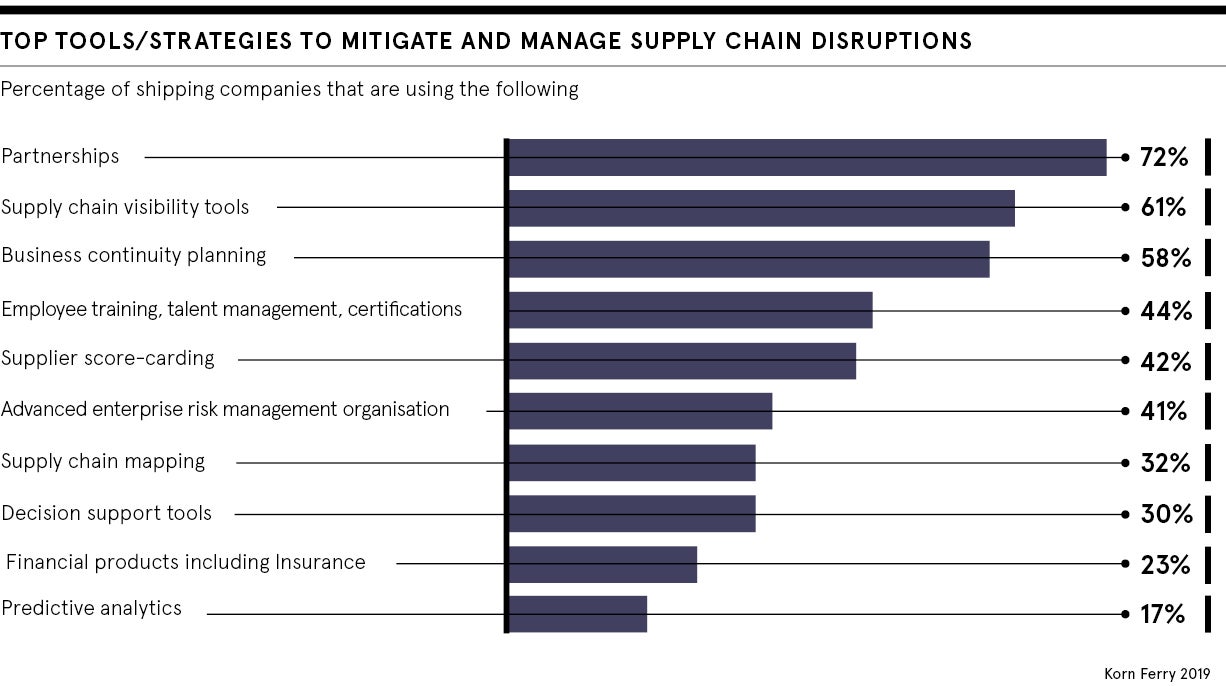Traditional, monolithic supply chains have gained a reputation for being slow and inflexible with ponderous lines of procurement, no longer fit-for-purpose in global markets characterised by uncertainty and rapid change.
For large global businesses, operating in an uncertain world, having a multitude of suppliers to rely on can be a real advantage
Factors such as the rise of a new, affluent middle class in countries like China, greater disposable incomes in some developing countries, and more short-term consumer events like Black Friday, now call for a supply chain that is agile and quick to respond to new commercial opportunities.
But is breaking up big supply chains, with their in-built economies of scale, the best way to make them more responsive?
Supply chains have to be nimbler, but not necessarily smaller
“Today’s supply chain management is all about managing a nimbler supply chain, although not necessarily a smaller one,” suggests Wael Elrifai, vice president of solution engineering at data agency Hitachi Vantara. But rather than splitting a supply chain into smaller units, he suggests businesses need to act smarter, and streamline the practices they use to manage multiple suppliers.
“This allows them to maintain quality and responsiveness while creating a robust and efficient market, and ultimately lowering prices,” he says.
David Williams, chief financial officer at global supply chain enabler Tungsten Network, agrees. “Supply chains of all sizes can be complex in nature not just because of their scale but also because of industry, sensitivities around a product or service, and the geographic compliance landscape they operate in,” he says.
“For large global businesses, operating in an uncertain world, having a multitude of suppliers to rely on can be a real advantage. The onus is then not on businesses reducing the supply chain size but focussing purely on managing them more effectively – improving efficiency and increasing foresight so that supply chains are able to respond quickly.”
The future supply chain manager needs to be better with data
Managing a traditional supply chain is labour intensive, bureaucratic and fraught with the dangers of human error; modern networks increasingly rely of digitisation and better connectivity. They have been transformed by a host of new technologies including artificial intelligence, fully automated robotic warehouses and blockchain – a system which automatically logs every transaction on a secure database that is shared, replicated and synchronised among stakeholders.
This makes smart contracts crucial, explains Jonquil Hackenberg, head of C-Suite Advisory at Infosys Consulting. “Instead of storing documents and contracts in silos… blockchain enables organisations to store information on a decentralised ledger where terms and conditions can’t be changed, bringing a much higher degree of trust.”
Supply chains have always been data heavy, but as businesses look to digital solutions, the volume of data produced is skyrocketing. This brings the risk that all this information could become a burden if it isn’t managed properly, with companies drowning in a sea of facts and figures.
“Supply chain managers need to empower themselves to transform the cost centre of data management into a value driver for their companies,” says Sian Hopwood, senior vice president at logistics software specialists BluJay Solutions.
“Good data will give them the opportunity to thrive by identifying and exploring new markets with comparably lower risks.”

Organisations need to use technology to combat supply chain risk
This idea of risk is also picked up by John Palmiero, senior vice president of Europe, Middle East and Africa at risk management software company MetricStream. “As a business’s third and fourth-party supplier network expands, it can be easy for one supplier fail to trigger a domino effect,” he explains.
“With new risk types emerging, organisations need to be better prepared and utilise technology to ensure a robust and healthy supply chain.”
Traditionally, understanding these inherent risks relied on personal relationships and human interaction, but today the complexity of supply chains means it is increasingly based on the analysis of data, he says. It is technology, not someone on the ground, that is best placed to manage and track suppliers and their activities, and provide real-time information that flags up infringements and issues of non-compliance.
“Whether you keep monolithic supply chains or split into nimbler sub-sets, the key to agility and tackling complexity is to be able to have real-time visibility of what is happening on the ground at a local level,” suggests Ian Stone, chief executive at management consultants Vuealta. “No matter how big it is, if your supply chain is not connected, you can’t keep pace today.”
Using the right tech can also give firms greater control
Increasingly, this technology is enabling companies to enter new markets and establish new supply chains, helping them to cope with the demands of an ever-changing regulatory world involving issues such as ethical sourcing, child labour, counterfeiting and provenance.
“Organisations across the world do not contend purely with economic uncertainty or industry-specific volatility, they also need to be able to operate amidst a changing compliance landscape which varies from country to country and threatens hefty consequences for non-compliance,” explains Mr Williams.
“The use of procurement technology supports greater visibility into the supply chain. It offers detailed insight into the reliability of particular suppliers, and the opportunity to foresee issues within the supply chain before they occur. Businesses can operate with an almost birds-eye view of supply chain behaviour.”
“Trust is one of the biggest obstacles to opening up new markets in developing countries,” adds Ms Hackenburg. “By harnessing the power of new technologies, organisations can build trust into the fabric of their supply chain, and begin building bespoke supply chains for different markets.”
Supply chains have to be nimbler, but not necessarily smaller
The future supply chain manager needs to be better with data

